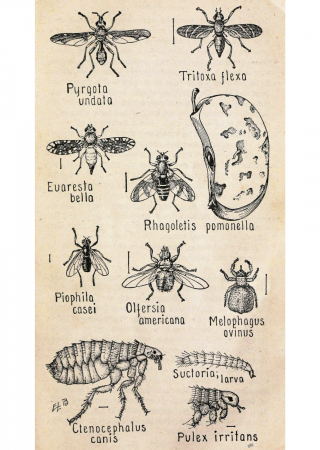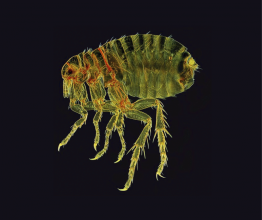Human Flea
- …Xenopsylla cheopis, a close relative of the human flea, is the principal carrier of the bacteria causing the black plague?
- …the flea's color is quite variable, from black to dark brown to yellow-brown?
- …human fleas became parasitic on humans roughly at the time that dogs were domesticated?
- …the massive thigh muscles that allow a flea to jump develop due to a protein called resilin?
- …the male's genitalia is called an aedeagus and represents probably the most complex type of genitals in any animal?
Human fleas are miniscule parasitic wingless insects, moving about by jumping or running. Their hosts are not only humans, but other mammals, both domestic and wild. Adults live by drinking blood, but can survive without food for over a hundred days. Females lay white, oval-shaped eggs, usually eight to twelve in number. Larvae hatch after around five days, and live on various bits of organic debris in floor cracks or carpets. After three moltings the larvae cocoon themselves. The entire development, from egg to adult lasts several weeks to several months, depending on local temperature and humidity. Fleas can live up to several years. As parasites, fleas can transmit dangerous diseases. Natural predators of fleas are mites, beetles, pseudoscorpions and ants.




